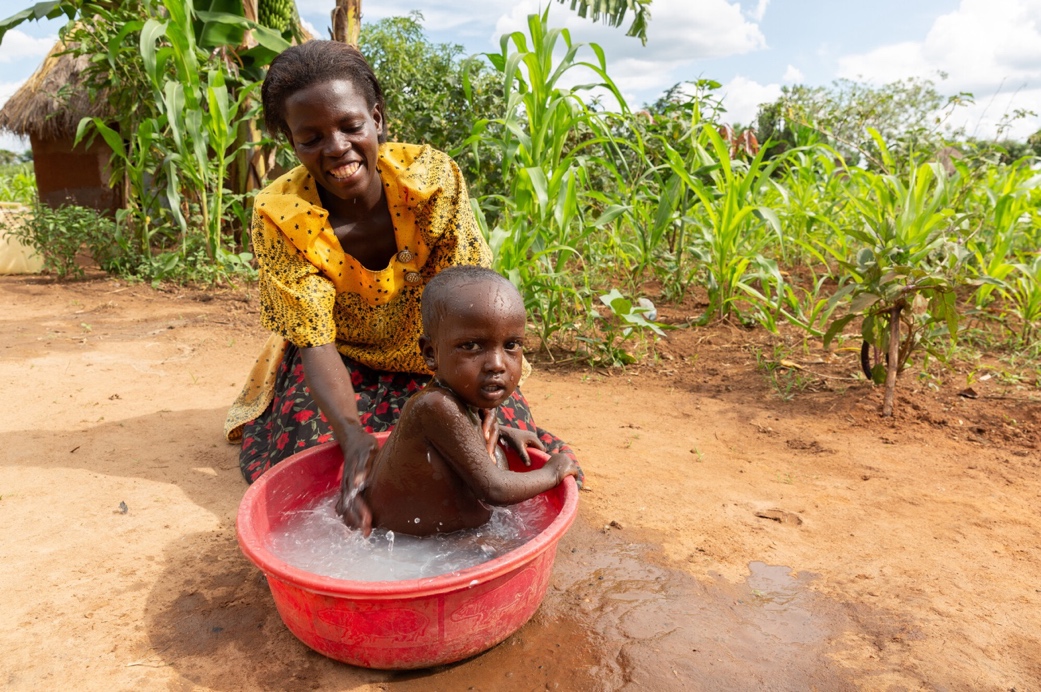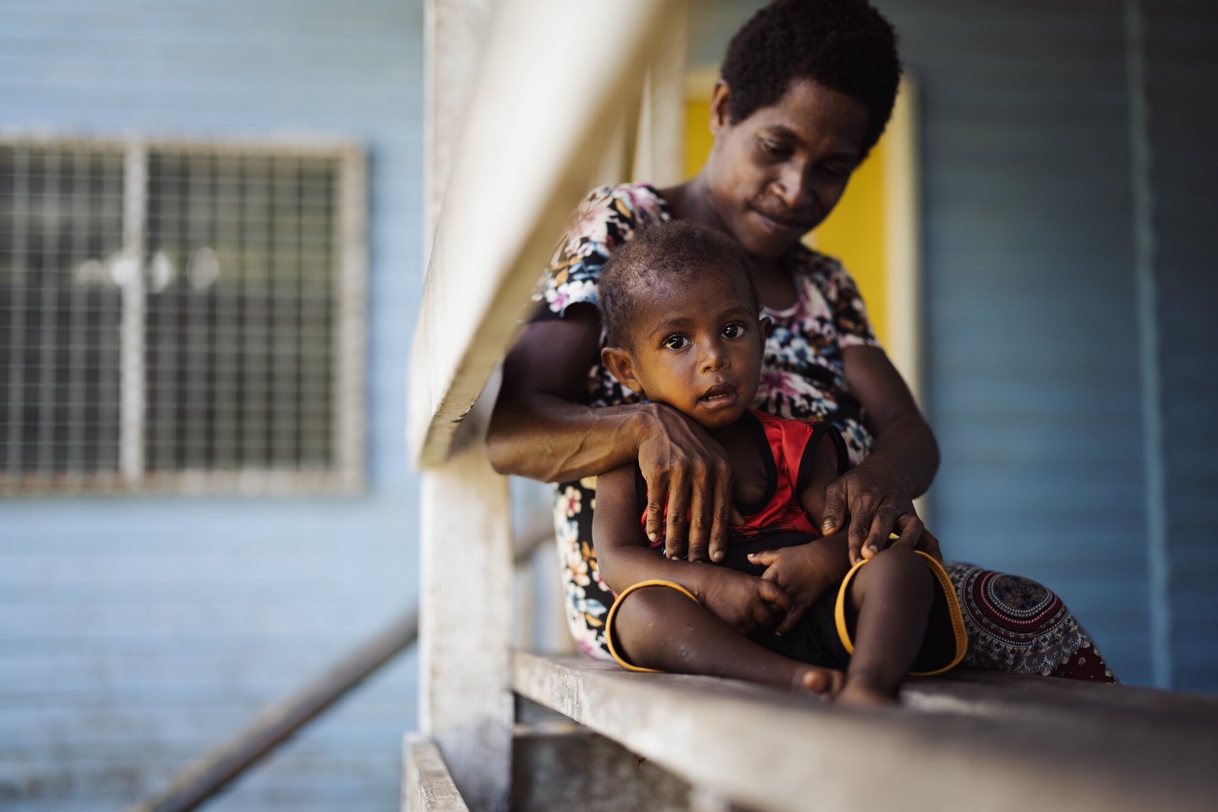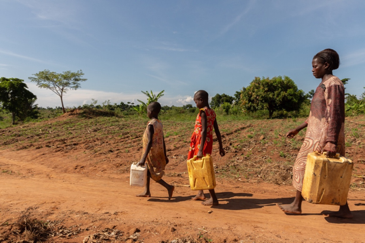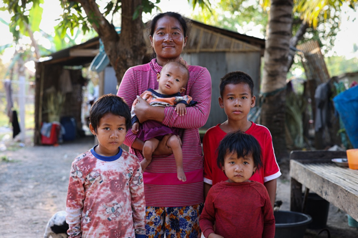New images highlight the stark contrast of Mother's Day experiences worldwide
WaterAid Australia

PRESS RELEASE
For Immediate Release
View and download more photos here
Harriet washes her son in a basin full of water now that she has easy access to clean water at home in, Uganda, May 2024. WaterAid/ James Kiyimba
This Mother's Day, while many mums will wake up with a cup of tea delivered to them in bed or a relaxing bubble bath, millions of mums around the world will face a different reality.
For them, the day begins not with joy, but with the heavy burden of securing something most of us take for granted — clean water for their families.
In countless communities, the simple act of turning on a tap is not an option and mothers bear the weight of making sure their family survive without it.
In fact, globally, women and girls spend 200 million hours every day collecting water.
In Papua New Guinea, pregnant mother Jennifer is preparing to welcome her second child. But unlike many expectant mums, her journey to motherhood is filled with obstacles most of us can’t imagine.
The local health centre, which serves more than 8,500 people, is crumbling. The building is riddled with termites, the delivery room lacks sanitation and the water tanks are rusted and contaminated. With no running water and broken toilets, Jennifer is forced to use the bushes or walk to the river — even while in labour.
The risks are serious. Without clean water, infection is common. Mothers must bring their own water to take medication. Staff clean instruments with bleach when no steriliser is available. In the wet season, overflowing pit toilets pose serious health hazards.
“If the clinic had clean water and proper equipment, I would feel safe to give birth here,” Jennifer says. “But it doesn’t.”
Jennifer Kenea, 23, and her son Michael wait outside Kuriva sub-healthcare centre, Central Province, Papua New Guinea. WaterAid/Tariq Hawari
In Uganda, mums like Harriet go to extraordinary lengths every day to protect and provide for their children.
Harriet’s story is a powerful reminder of the impact water can have on a mother’s ability to care for her family. For years, Harriet and her children relied on unsafe, contaminated water sources shared with animals. The consequences were severe: stomach aches, skin rashes and frequent illnesses became part of daily life.
Before gaining access to clean water, Harriet said:
“I really feel envious when I see that the other villages have water, and we don't. I feel like the world belongs to them and we're just visitors in this world. “
The search for water also consumed much of Harriet’s time, time she could have spent earning an income or helping her children thrive. Instead, the family’s limited resources were diverted to medical expenses, leaving nothing for essentials like school fees or nutritious food.
But with access to clean water, everything changed.
Sumaya, 9, Aidah, 10, and their mother Harriet going to collect unclean water from a
pond for their household use in Uganda. WaterAid/ James Kiyimba
Today, Harriet’s children are healthier. The financial strain of constant illness has eased. The time once spent searching for water is now used to build a better future. Clean water hasn’t just transformed Harriet’s day-to-day life — it has restored her hope.
In Cambodia, Sun, 33, lives with her four children. Her husband works in Thailand, sending money home when he can. Like many mothers in the region, Sun carries the full weight of raising her children without reliable access to safe water.
Each day, Sun walks to a nearby well or pond, collecting just one bucket of water at a time.
The water looks clear, but she worries about illness. Her youngest child suffers from stunting, a lasting impact of not having enough nutritious food or safe water during pregnancy.
“When she was born, she weighed only 1.5kg. I wanted to take her to hospital, but I couldn’t afford the transport.”
Sun still dreams of a simple tap at home.
Sun Seiya, 33, with her children (left to right) Chantha, 5, baby Channa, Sreyleak, 4, and Samnay, 10 in their community in, Cambodia.. WaterAid/Tariq Hawari
Nicole Ryan, Acting Director of Community and Corporate Engagement at WaterAid Australia, said:
“This Mother’s Day, let’s not forget that for many mums like Sun in Cambodia, there are no flowers or breakfast in bed—just another day of walking for water and worrying about their children’s health.
No one should have to raise their children without access to something as basic and essential as clean water. At WaterAid, we’re working alongside our partners in Cambodia, Timor-Leste, Papua New Guinea and beyond to make sure every mother has the chance to watch her children grow up healthy and strong—with clean water close to home.”
-ENDS-
Key Facts:
Notes to Editors:
- 703 million people in the world – almost one in ten – don’t have clean water close to home.1
- 2.2 billion people in the world – more than one in four – don’t have safe water.1
- Almost 2 billion people in the world – one in four – lack soap and/or water to wash their hands at home, if they have a place at all.1
- 1.5 billion people in the world – almost one in five – don’t have a decent toilet of their own.1
- 570 million people in the world – 1 in 14 – have a decent toilet but have to share it with people outside their family. This compromises the privacy, dignity and safety of women and girls.2
- Almost 400,000 children under five die every year due to diseases caused by unsafe water, sanitation and hygiene. That's more than 1000 children a day, or almost one child every one and a half minutes.2
- Investing in safely managed water, sanitation and hygiene services provides up to 21 times more value than it costs.3
[1] WHO/UNICEF (2023). Progress on household drinking water, sanitation and hygiene 2000-2022: special focus on gender. Available at: washdata.org/reports/jmp-2023-wash-households-launch (accessed 11 Jul 2023).
[2] WHO (2023). Burden of disease attributable to unsafe drinking-water, sanitation and hygiene: 2019 update. Available at: who.int/publications/i/item/9789240075610 (accessed 24 Jul 2023).
[3] WaterAid (2021). Mission-critical: Invest in water, sanitation and hygiene for a healthy and green economic recovery. Available at: washmatters.wateraid.org/publications/mission-critical-invest-water-sanitation-hygiene-healthy-green-recovery (accessed 1 Nov 2023).
About us:
WaterAid
WaterAid is an international not-for-profit determined to make clean water, decent toilets and good hygiene normal for everyone, everywhere within a generation. We work alongside communities in 22 countries to secure these three essentials that transform people’s lives. Since 1981, WaterAid has reached 28 million people with clean water and nearly 29 million people with decent toilets.
To find out more visit www.wateraid.org.au follow @wateraidaustralia on Instagram, @WaterAidAus on Twitter, or find WaterAid Australia on Facebook at www.facebook.com/wateraidaustralia
Contact details:
For more information, please contact:
Tegan Dunne, Communications Manager, WaterAid Australia, [email protected]
0415174589




